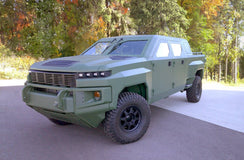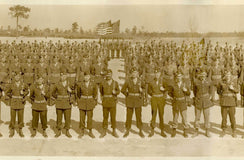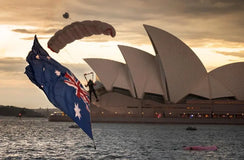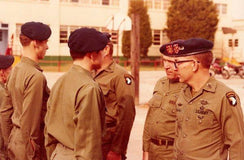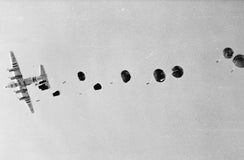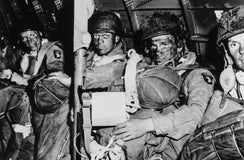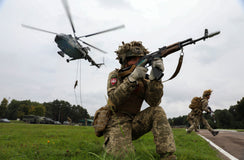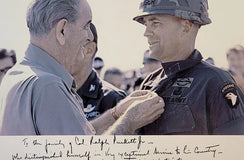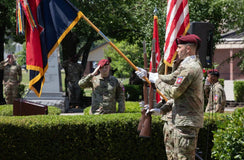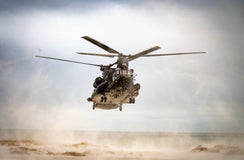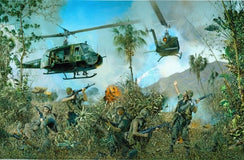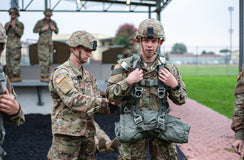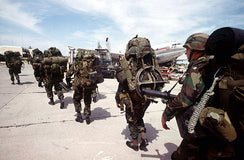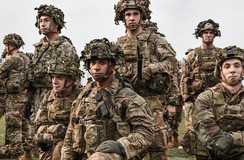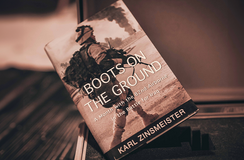Operation Dragoon: Allied Invasion of Southern France in 1944
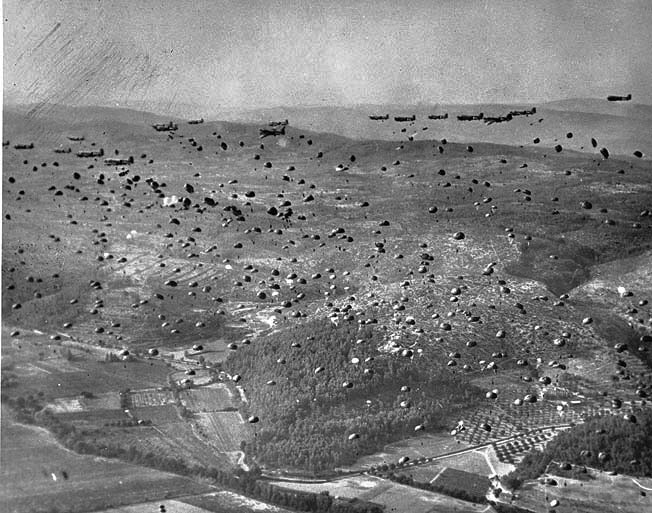
Operation Dragoon, originally codenamed Anvil, was the Allied invasion of Southern France that began on August 15, 1944. It was a critical complement to the D-Day landings in Normandy, aiming to open a second front and facilitate the liberation of France from Nazi occupation. This blog will provide details of military aspects of Operation Dragoon, focusing mainly on airborne operations, the different phases of the operation, and the overall strategic impact. Since the Normandy invasion gets most of the notoriety, it is only fair to pay tribute to these courageous paratroopers who fearlessly jumped into one of the most hostile areas in World War Two.
From Criticism to Strategic Decision-Making
By mid-1944, the Allies were making significant strides in the European theater. Operation Overlord, the Normandy invasion, was successfully launched in June, and Allied forces were pushing German troops back across Western Europe. However, the need for a second front was deemed essential to relieve pressure on the advancing forces in Normandy and accelerate France's liberation.
When the idea was first presented, Operation Dragoon was met with controversy and hesitation. On one hand, British Prime Minister Winston Churchill preferred focusing on the Italian Campaign and operations in the Balkans in South Eastern Europe. However, American leaders, notably General Dwight D. Eisenhower and General George S. Patton, advocated for an invasion of Southern France to secure vital ports and disrupt German defenses. They argued that there was unfinished business with the Germans in France.
The primary objectives of Operation Dragoon were not just to capture critical ports along the French Mediterranean coast, particularly Marseille and Toulon, but to advance northward to link up with Allied forces from Normandy. This would create a continuous front line, facilitating a coordinated push into the enemy's heartland, Germany, and significantly altering the course of the war.

The operation involved a diverse and unique array of forces with special skill sets, hardened by epic battles in Africa, Europe, and elsewhere. General Alexander Patch commanded the Allied invasion force, a testament to the diversity and unique skills of the forces involved, including the U.S. Seventh Army, the French First Army under General Jean de Lattre de Tassigny, and various airborne and commando units. The Allied naval and air forces provided the naval and air support, ensuring comprehensive coverage and support.
Airborne Operations: The Tip of the Spear

Airborne operations played a crucial role in Operation Dragoon's success. The mission was assigned to the 1st Airborne Task Force (Allied), a composite unit comprising American, British, and Free French paratroopers and glider infantry. They aimed to secure critical positions inland, disrupt German communications and reinforcements, and pave the way for the seaborne landings.

The airborne operation commenced on the night of August 14-15, 1944. The American 517th Parachute Regimental Combat Team (PRCT), along with elements of the 509th Parachute Infantry Battalion, 551st Parachute Infantry Battalion, and the 2nd Independent Parachute Brigade (British), were dropped in the vicinity of Le Muy, a strategic town near Draguignan.

Among the components of the 1st Airborne Task Force (ABTF), the 509th Parachute Infantry Battalion (PIB) stood out for its extensive combat experience. It previously participated in operations in North Africa and Italy, including an assault with the Vth Army at Anzio. The 517th Parachute Regimental Combat Team (PRCT) was the largest unit within the 1st ABTF, comprising the 517th Parachute Infantry Regiment, the 460th Parachute Field Artillery Battalion, and the 596th Airborne Engineer Battalion.
The assault by the 1st Airborne Task Force (ABTF) centered around several critical missions, each with a unique codename. The pathfinders' mission, Mission Albatross and Mission Canary for the paratroopers, and Mission Bluebird and Mission Dove for the gliders. These codenames were part of a complex communication system that helped maintain operational security and coordination. The collective codename for these airborne and glider missions was "Rugby Force."

The Rugby Force was entrusted with several critical missions:
- Land in the Le Muy area at 4:15 a.m. on August 15 and prepare for and cover the arrival of the gliders.
- Prevent enemy movements towards Le Muy and Luke and secure the route to the beach.
- Support the landing of the 36th Infantry Division by taking enemy defenses in the rear of Fréjus.

To achieve these objectives, three drop zones were designated in the vicinity of Le Muy:
- Drop Zone C for the 509th Parachute Regimental Combat Team (PRCT)
- DZ A for the 517th PRCT and 551st Parachute Infantry Battalion (PIB)
-
DZ O for the 2nd Independent Parachute Brigade Group (IPBG) from Britain.

Two landing zones were also planned for the gliders: Landing Zone A, modeled on DZ A, and LZ O, modeled on DZ O.
The 509th PRCT was tasked with cutting communication lines and seizing the heights south of Le Muy to support the 2nd IPBG's attack on the city with artillery fire. The 517th PRCT aimed to secure the high ground southeast of Les Arcs and southwest of Le Muy, capture the towns of La Motte and Les Arcs and block access to the main roads towards Vidauban and Draguignan. The 2nd IPBG was to seize areas east of La Motte and capture the city of Le Muy. The 551st PIB was to relieve elements of the 517th PRCT. Glider units were to provide artillery support and reinforce paratrooper units as needed.
The airborne drop faced significant challenges, including adverse weather conditions and strong German anti-aircraft defenses. The paratroopers were scattered over a wide area, complicating the mission's initial objectives. Many units found themselves far from their intended drop zones, and some were even forced to fight their way to their designated areas. Despite these challenges, the airborne troops displayed remarkable resilience and adaptability. Small units quickly regrouped, secured vital crossroads, and disrupted German communication lines.
One of the most significant achievements was the capture of Le Muy, which was vital for controlling the approaches to the coastal areas. The paratroopers' efforts effectively delayed German reinforcements and allowed the seaborne forces to establish a beachhead with less resistance.
Pathfinders and Mission "Albatross"
The 1st ABTF's first mission tasked Pathfinders with setting up drop zone (DZ) markers. Three C-47 serials took off at 1:00 a.m., carrying 122 paratroopers. The first serial, targeting DZ C, missed and required multiple attempts, finally dropping the team 15 km east. The second serial aimed for DZ/LZ A but dropped 6 km off target; they reached DZ A by afternoon after combat. The third serial successfully marked DZ/LZ O despite heavy fog. Only DZ/LZ O was effectively marked, with other teams facing significant challenges and delays.
The mission "Albatross" was crucial for the paratroopers, involving 396 C-47 planes dropping 5,628 paratroopers in 10 waves from Italian airfields between 4:23 and 5:09 a.m. For DZ C, the first wave of 45 planes from Follonica carried 600 men from the 509th PIB, 463rd PFAB, and 596th AEB. Their task was to take the heights south of Le Muy and block the Le Muy-Sainte Maxime road. Nearly all were dropped on DZ C as planned. A second wave from Grosseto, also carrying 600 paratroopers from the 509th PIB and 463rd PFAB, was less accurate. Some landed near St. Tropez, and 300 paratroopers ended up off course. Despite these issues, the paratroopers, led by Captain Jess H. Walls, secured their objectives by afternoon and set up artillery support.
For DZ A, the first wave from Ombronne dropped 720 paratroopers from the 517th PIR and 596th AEB, but the drop was highly dispersed. Only a third landed close to the DZ, leading to scattered engagements and a slow regrouping. The second wave, carrying 700 paratroopers from the 3rd Battalion, 517th PIR, was also dispersed, with groups landing up to 40 km off target. Despite the dispersal, some elements managed to engage and neutralize German forces, regrouping by evening. The third wave carrying 450 gunners from the 460th PFAB achieved a precise drop, setting up artillery support by sunrise. The fourth wave, which carried 670 paratroopers from the 1st Battalion, 517th PIR, faced significant dispersion, with most men landing far from the DZ. Despite this, they regrouped and secured critical positions by the next day.
For DZ O, the first wave from Galera dropped 450 paratroopers from the 2nd IPBG and 1st ABTF HQ accurately at 4:54 a.m. The second wave, which carried 350 paratroopers from the 5th and 6th Paratroopers Battalion, had minor issues but mainly landed on target. The third wave from Ciampino faced significant dispersal, with half landing in Fayence, Callas, and Saint-Paul-en-Forêt, and the other half on DZ O. The fourth wave of 27 C-47s dropped 350 paratroopers from the 5th PB on DZ O at 5:14 a.m.
The paratroopers secured Mitan and established the 1st ABTF command post by 5:52 a.m., establishing radio contact with the 36th Infantry Division by 8:20 a.m. Despite initial challenges, including scattered landings and delayed regrouping, the paratroopers managed to capture key positions and secure German prisoners, contributing significantly to the overall success of the operation.
Bluebird, Dove, and Eagle
As in Normandy, the gliders operated separately from other airdrops. The first mission, coded "Bluebird," aimed to deliver artillery support and radio equipment to DZ/LZ O.

Thirty-seven Waco CG4A gliders departed from Voltone, Italy, at 5:58 a.m., carrying elements of the 64th British Light Artillery Battalion, the 1st ABTF, and the 512th Airborne Signal Company. They landed at 9:26 a.m., though four gliders were lost.

The equipment enabled Major General Frederick to coordinate missions and provide artillery support. On August 16, General Frederick ordered an attack on Le Muy, which was successfully launched at 4:00 p.m. The BLUEBIRD mission continued, with 35 more gliders landing smoothly at 5:49 p.m. MISSION CANARY marked the first daylight combat jump for the 551st PIB. 736 paratroopers landed on DZ A between 6:04 and 6:10 p.m., with only 17 injuries.
Mission DOVE, the most critical mission on August 15, involved 332 C-47s and 332 Wacos, transporting 2,238 men, 25 howitzers, and 166 vehicles to LZ A in seven waves.

The first wave departed from Follonica with the 550th GIB at 3:35 p.m. Subsequent waves carried various units, including the 602nd GFAB, 442nd "Nisei" Infantry Regiment, 512th Airborne Signal Company, 2nd Chemical Mortar Battalion, 676th Medical Collecting Company, and the 887th Airborne Aviation Engineer Company.
Delays and coordination issues caused confusion in the air, leading to premature drops and collisions. Despite beacon signals marking the LZ, the chaotic airspace resulted in gliders landing at dangerously high altitudes. Only 30 gliders were fully recoverable.
The last "Official" mission aimed to parachute equipment for isolated troops to sustain them for seven days from August 16, 1944.

At 7:55 a.m., 130 C-47s took off with 246 tons of equipment and ammunition, dropping them between 10:04 and 10:35 a.m. However, the clumsiness of the 334th Quarter-Master Depot Supply Company caused delays, resulting in significant dispersion and mixing of American and British equipment.
The Eagle mission was the final planned airborne operation of Operation Dragoon. Despite the overall success, 60% of U.S. and 40% of British paratroopers landed off-target, highlighting poor precision. Following Dragoon, the 1st ABTF secured Cannes and Nice but was dissolved by November 1944.
The airborne drop faced significant challenges, including adverse weather conditions and strong German anti-aircraft defenses. Many paratroopers were scattered over a wide area, complicating the mission's initial objectives. Despite this, the airborne troops displayed remarkable resilience and adaptability. Small units quickly regrouped, secured vital crossroads, and disrupted German communication lines.
One of the most significant achievements was the capture of Le Muy, which was vital for controlling the approaches to the coastal areas. The paratroopers' efforts effectively delayed German reinforcements and allowed the seaborne forces to establish a beachhead with less resistance.
Airborne Operations Critical, once again
After securing the initial objectives, the airborne forces played a vital role in Operation Dragoon's pursuit phase.
The paratroopers were instrumental in capturing strategic locations, such as bridges and road junctions, which were crucial for maintaining the advance's momentum.
The 517th PRCT and other airborne units were often deployed ahead of the main forces to seize critical positions and prevent German counterattacks. Their mobility and ability to operate independently made them invaluable assets in the rapidly changing battlefield environment. These deployments also had a high risk associated with them, but nothing held these paratroopers back!
One notable engagement during this phase was the Battle of Montélimar. The 36th Infantry Division, supported by elements of the 517th PRCT, engaged German forces attempting to establish a defensive line along the Rhône River. The battle was fierce, but the Allies managed to encircle and defeat the German troops, weakening their hold on Southern France.
Strategic Impact and Legacy
Operation Dragoon had a profound impact on the course of World War II.

The successful invasion of Southern France achieved its primary objectives, securing vital ports and establishing a second front that complemented the ongoing operations in Normandy. The link-up between the forces from Operation Overlord and Operation Dragoon created a continuous front line, accelerating the liberation of France and paving the way for the eventual Allied victory in Europe.
The operation also demonstrated the effectiveness of airborne operations and combined arms tactics. The coordination between airborne, naval, and ground forces showcased the Allies' ability to conduct complex, large-scale operations with precision and effectiveness. The lessons learned from Operation Dragoon would influence future military operations and contribute to the development of modern warfare doctrines.
Furthermore, Operation Dragoon had a significant psychological impact. The liberation of Southern France and the rapid advance of Allied forces boosted the morale of the military and civilian populations. It also weakened the resolve of the German forces, contributing to the eventual collapse of Nazi resistance in Western Europe.
Operation Dragoon – The Sequel to D-Day
Operation Dragoon remains a pivotal moment in World War II's history. The military aspects of the operation, particularly the airborne operations, exemplify the strategic planning, coordination, and execution essential to the Allies' success. The bravery and resilience of the paratroopers and other combat units were instrumental in achieving the objectives and securing a decisive victory.
Although less famous and talked about than D-Day, Operation Dragoon's legacy is evident in its contribution to the overall Allied war effort and the lessons it provided for future military engagements. It not only facilitated the liberation of France but also demonstrated the power of joint operations and the importance of maintaining momentum in the face of adversity. If some had doubts that the Allies would come out on the winning side, Operation Dragoon proved the opposite.
As we reflect on Operation Dragoon, we honor the courage and sacrifice of the paratroopers who led the way in this critical Campaign. Their efforts were instrumental in shaping the outcome of World War II and bringing credibility to the Airborne Ops.

